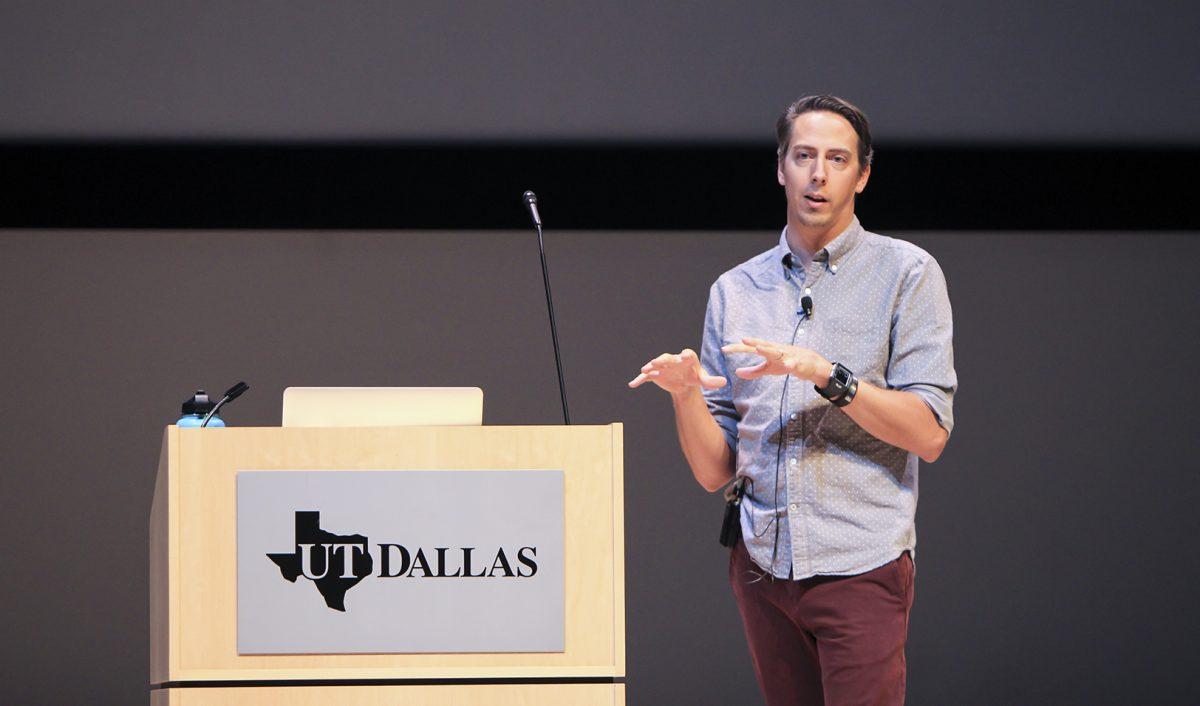On Oct. 25, one of Disney’s animation supervisors Malcon Pierce gave a presentation on his upcoming film “Moana.” The Mercury sat down with him to discuss his origins, influences and work in “Moana.”
How did you get your start in animation?
When I was little, I knew I wanted to do animation. So I was drawing a lot when I was little, of course, and then when I got into high school I started getting more into the music side of things. So I actually started down that course and went to college for music and was completely adrift from what I thought I was going to do. Then I got a little bit into that and realized that I like doing music for me but not really as a career.
So I had a teacher at this college I was going to that told me, “Maybe you should look into an art school.” And so she sort of started to tip the hat back into creative arts and visual arts and I found that I did like that.
So I ended up going to the Art Institute of Fort Lauderdale. I knew this was maybe a route to animation or film production and I eventually found that I did like doing the animation part of how it fits into the bigger picture. So I started doing work with an animation mentor to try to get more focused in animation and, through that, find all the good networks and meeting the right people.
Then when their time came they gave me a spot with BluSky, which is where I started.
So how would you say your music knowledge goes into your animations?
Well, there’s definitely a rhythm in performance. I think musicians have this natural tempo to the way they think about things and the way they articulate things. So I think that helps me. You know in animation you deal with phrasing, comedic timing or dramatic timing and to have this underlying metronome going it just sort of helps you decide what to do when you make these decisions. A lot of animation is with a score or it might be to animate a musical. So having those tendencies tend to make the animation have certain flow and tempo to it that’s unique to people that have a musical background.
So for students coming into the industry, what’s the biggest advice you could give to them to get where you are now?
I think a lot of times we’ll see there are general guidelines that people are doing with their artwork. Like they’ll think, “I need to have these specific shots in my reel to move onto the next step.” And sometimes what I think happens is the artists get too focused on checking off these boxes and they lose a little bit of what makes their work unique. Even myself, I’m always sort of evolving how I view not just animation but artwork from one film to the next. So I think when you’re in school especially just try to stay inspired. Try to funnel that inspiration into your work. What you get from that is animation that kind of feels like it’s missing something behind it.
What was it like working on Moana?
I think “Moana” definitely has its own identity. We worked really hard to try to make it not feel like another Disney film with a different sort of texture or skin. So we worked really hard to try to capture what is unique about it.
I think with all of our films, ***Wreck-it Ralph*** included, I think the similarities is that the research that we’re doing has been incredible and I think every film we’re doing more and more research on. So on ***Moana***, we had this team of people that were gathered from all over the Pacific Islands and we call them the oceanic trusts and they were sort of on a board of directors.
So the decisions we were making, we would present it to them and be like, “Hey this is kind of what we’re doing, do you have any ideas or anything that would make this more accurate.” And they would help us either fine tune that or not. They were really good about being like, “You know this isn’t a thing that you really see in our culture.” So it’s helpful for us because we’re all on the other side of the globe.
***There’s been some controversy over the character Maui for being misrepresented or “too fat,” how does that tie in to your process?***
Yeah, I mean that was something we’re trying to be very careful about. We knew we wanted to have this character be this larger than life demigod character. And in the early sequences he was kind of this guy that had been out of the game for a while, so he was not as in shape as he used to be. Later we thought, “Well that doesn’t really feel right either.”
So we ended up kind of beefing him up a little bit more to kind of make sure we felt like he was representing their folklore to the best we could. So in the end, I feel like we landed in a really good spot where he feels like this totally awesome superhero guy.
And working with Dwayne Johnson been awesome as well. His support on the project has been unreal. Sometimes you’ll hear of voice actors just reading the lines and checking out, but he was all in. We showed him some early Maui designs when he first came along and he was like “That’s my grandfather!” So we saw a picture of his grandfather and it was legit Maui, he looked just like him so we were like, “Oh, that’s awesome.” So he was totally invested.







